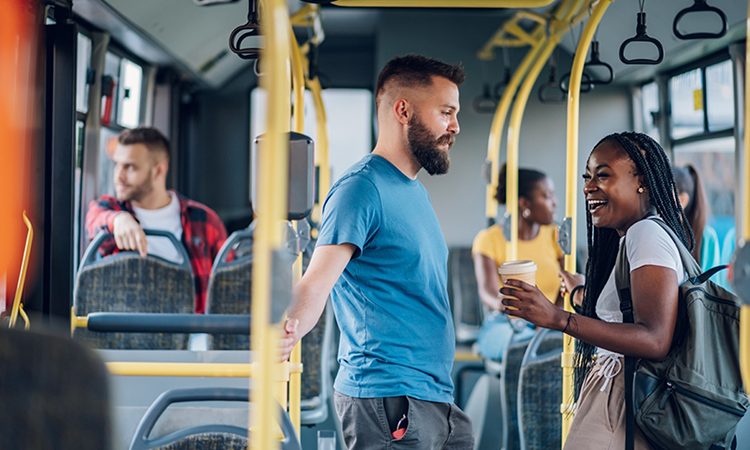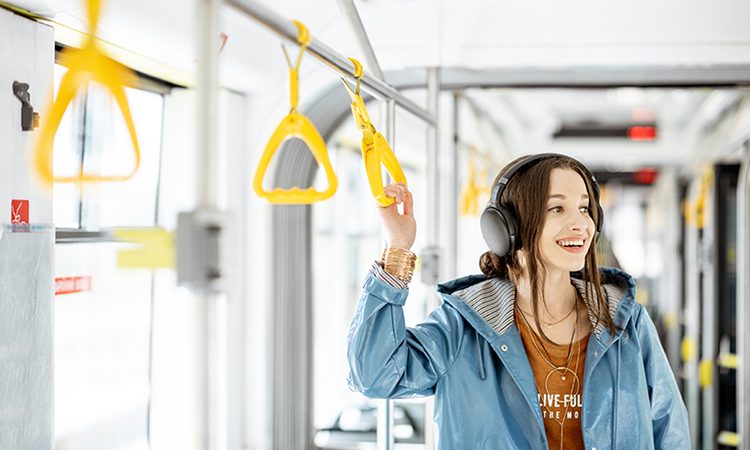Don’t forget young people when it comes to transport policy
- Like
- Digg
- Del
- Tumblr
- VKontakte
- Buffer
- Love This
- Odnoklassniki
- Meneame
- Blogger
- Amazon
- Yahoo Mail
- Gmail
- AOL
- Newsvine
- HackerNews
- Evernote
- MySpace
- Mail.ru
- Viadeo
- Line
- Comments
- Yummly
- SMS
- Viber
- Telegram
- Subscribe
- Skype
- Facebook Messenger
- Kakao
- LiveJournal
- Yammer
- Edgar
- Fintel
- Mix
- Instapaper
- Copy Link
Posted: 16 January 2024 | Tim Burns - Sustrans | No comments yet
Tim Burns, Head of Policy at Sustrans, discusses the urgency of addressing the transport challenges faced by young people and the pivotal role that policy changes can play in shaping a more inclusive and sustainable future.


Young people are limited in their options for transportation, cutting many of them off from accessing life-changing education, work and life opportunities”
Sustrans and the University of the West of England recently published a ground-breaking study revealing how transport provision has ignored the needs of young people.
Through this research, we found that young people are limited in their options for transportation, cutting many of them off from accessing life-changing education, work and life opportunities, stifling businesses and the economy of new talent.
Transport to Thrive
Transport to Thrive was the first study of its kind to focus on young people (defined as 16-24 year olds). This is an important stage in a young person’s life, when most are aiming to move from education into employment, become more independent and leave their homes.
The study was funded by the Health Foundation as part of its Young People’s Future Health Inquiry. Until now, there has been very little research to identify and understand transport barriers for this demographic.
Transport to Thrive presents new analyses of national travel data, including Sustrans’ own Walking and Cycling Index, and interviews with a diverse group of young people to ensure lived experience informed our research findings and recommendations. This approach has been key in our findings and recommendations for government action.
Reality for young people struggling to make daily journeys
Young people make 21% fewer trips than other working age adults and this gap has widened in the last 20 years”
We found that young people make 21% fewer trips than other working age adults and this gap has widened in the last 20 years. For example, in 2002, young people made 7% fewer trips per year than the population average, while in 2019 the difference had widened to 14%.
The likelihood of a young person having a low level of mobility, defined as making 10 or fewer trips a week, depends on their employment status, household income and whether they have access to a car. In addition, young people from households in the lowest income quintile are 1.4 times more likely to have a low level of mobility (compared to highest income quintile households).
Transport is not meeting the needs of many young people
Young people without car access are twice as likely to have a low level of mobility compared to those who are the main driver of a car”
For decades, national transport investment and policy decisions have prioritised private motor vehicles. However, only 40% of young people have a full driving licence in comparison to 74% of adults aged 16 or over. Furthermore, only 28% are the main driver of a car in comparison to 57% of older adults.
Our analysis of national travel data showed that young people without car access are twice as likely to have a low level of mobility compared to those who are the main driver of a car.
Furthermore, many young people rely on a combination of transport modes, often within the same journey, especially buses, walking and cycling. In comparison, the trips of older adults are more likely to be dominated by car use. However, bus services have been cut in recent years and services are poor in many areas. Additionally, options for safe cycling don’t exist in most parts of the UK and the cost of a cycle is becoming more and more expensive.


The barriers – lack of options and cost of transport
Our interviews revealed multiple instances of young people unable to pursue vital life opportunities, due to a lack of transport options and the cost of travel. This has a huge impact on skills development, future income, personal and professional networks and health. Stopping young people accessing these opportunities also reduces prospects for businesses and the economy.
One young person revealed that they were unable to pursue a higher-paid job to help finance university, “The fact is, the bus system doesn’t even run early in the morning. I was trying to find a way around it, but it just wasn’t working. That was just really sad for me because I couldn’t do a job that I’d be earning a lot more than I’m doing now.”
Active travel and public transport are key for basic mobility
Young people told us how active travel and public transport provide access to opportunities important for developing life skills, building confidence and improving their quality of life.
Young people value buses for providing a degree of independence. They make more trips by public transport than any other age group”
Young people value buses for providing a degree of independence. They make more trips by public transport than any other age group, with two in five young people saying that they rely on it. However, this is often compromised by unreliable services, which can make them late for work and education.
Even where there is a good public transport option, young people are often frustrated with its cost and the impact on their disposable income.
In interviews, many young people expressed frustration with their lack of control over their mobility. Here, cycling offers potential advantages over other transport options, but has low take-up. Young people highlighted a lack of access to cycles and lack of safe cycle routes as barriers.


The key group for achieving net zero
Young people have the lowest impact on climate change of all working age adults as they make fewer trips by car. At the same time, young people are also likely to experience the greatest effects of climate change.
Multimodal journeys using public transport, walking, wheeling, cycling, e-scooters and shared transport must be as attractive, convenient, safe, accessible and affordable as using a car”
Young people recognise the need to reduce car use and to use more sustainable transport options. A 2022 survey for the Department for Transport (DfT) found that 49% of 16-24 year olds agreed – ‘In future, I am willing to use cars less to reduce my contribution to climate change’ – the highest percentage of all age groups.
However, young people will only stick to these more sustainable travel behaviours if they are given the choice to do so. Thus, we need to do far more to improve and integrate sustainable modes of transport. Multimodal journeys using public transport, walking, wheeling, cycling, e-scooters and shared transport must be as attractive, convenient, safe, accessible and affordable as using a car.
Young people can do the most to help the government meet its target of net zero by 2050. But only if the government helps them.
The evidence is here – we must act now
We must give young people a voice in the decisions that affect how they travel”
Economic growth and job creation are the biggest priorities for the government. However, current transport policy and provision is obstructing young people from contributing to these goals by cutting them off from education and better jobs.
Too little consideration has been given to the impacts of transport policy on young people. Now is the time to turn this around. We must give young people a voice in the decisions that affect how they travel.
No one, right or left, would disagree that we should strive to give young people the best start in life. And most local leaders recognise the need to shift towards more sustainable forms of transport, for the climate, for equality, for health and for their local economy.
The UK government can help by devolving powers to local transport authorities to take greater control of buses by setting routes and minimum service levels that can improve reliability and reduce costs for passengers. Bus patronage rose by 8% following these changes in Greater Manchester.
Giving more local transport authorities long term multi-year funding will also support these aspirations. The City Region Sustainable Transport Settlements have been useful in ensuring the right investments for the future can be made to improve mobility for everyone. Where this is starting to take place, we are seeing sustained improvements – for example, the transformation of the centre of Leeds for walking and wheeling. Similar mechanisms, for example the workplace parking levy has helped to bring back trams across Nottingham while investment in London has transformed cycling infrastructure.
What doesn’t work today must be re-evaluated for tomorrow. When this relates to opportunities for young people – it is a societal and economic priority. Such re-evaluation, with testimony of lived experience, not only showed us the transport gap they are enduring, but also that the time for action is now.


Related topics
Accessibility, Micro-mobility, Mobility Services, Multimodality, Passenger Experience, Public Transport
Related modes
Bikes & Scooters, Bus & Coach
Related countries
United States
Related organisations
Sustrans, UK Government
Related people
Tim Burns







